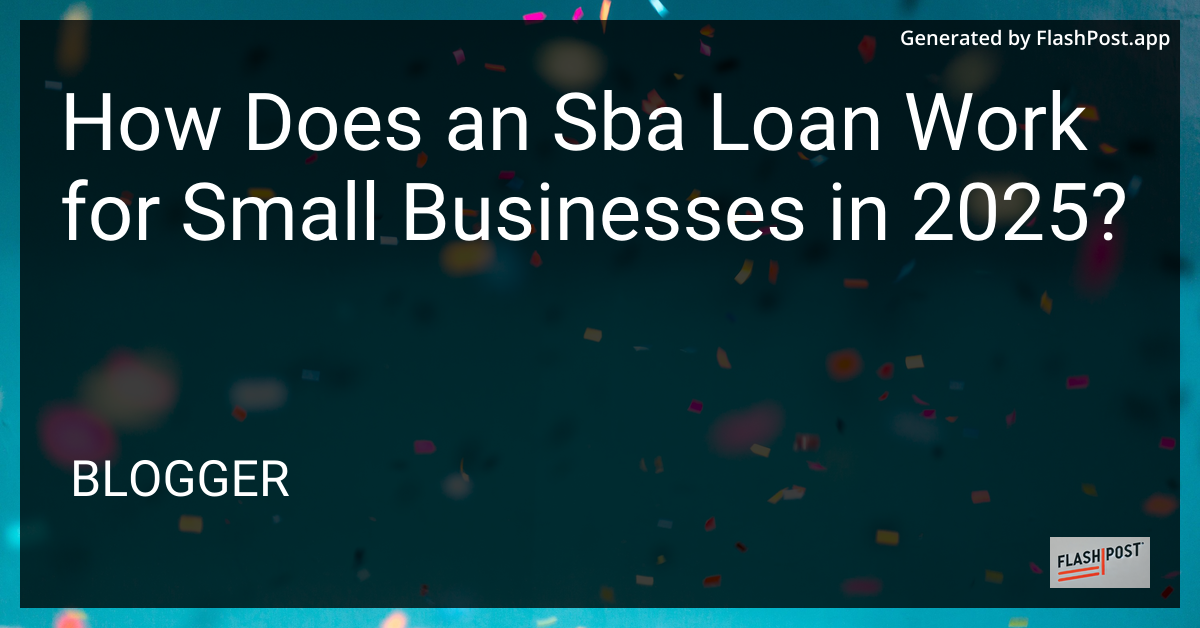How Does an Sba Loan Work for Small Businesses in 2025?

How Does an SBA Loan Work for Small Businesses in 2025?
Navigating the complexities of securing a loan for your small business can be challenging. Fortunately, the Small Business Administration (SBA) offers a solution with their SBA loan programs. But how does an SBA loan work for small businesses in 2025? In this article, we’ll unravel the intricacies of SBA loans and explore their benefits and application process.
Understanding SBA Loans
SBA loans are not direct loans from the government. Instead, the SBA partners with lenders to provide guarantees on a portion of the loan amount, reducing the risk for lenders and making it easier for small businesses to qualify for financing.
Key Features of SBA Loans
Lower Down Payments: Compared to traditional loans, SBA loans typically offer lower down payment requirements, making them accessible to businesses with limited capital. If you’re starting out with no money for a small business loan, an SBA loan might be a viable option.
Longer Repayment Terms: SBA loans offer longer repayment periods, which can help ease the monthly financial burden and improve cash flow for your business.
Favorable Interest Rates: The interest rates for SBA loans are usually competitive, often lower than those for conventional loans, as they are partially guaranteed by the government.
Types of SBA Loans Available in 2025
7(a) Loan Program: This is the most popular SBA loan program, designed for a wide range of purposes including working capital, equipment purchase, and even debt refinancing.
504 Loan Program: Perfect for businesses seeking to purchase or improve fixed assets like real estate and equipment. This program offers long-term, fixed-rate financing options.
Microloan Program: Targeted towards small businesses needing smaller loan amounts. The maximum loan size is $50,000, suitable for startups or business expansion.
How to Apply for an SBA Loan
To apply for an SBA loan, you’ll need to prepare a detailed business loan proposal. This proposal should include your business plan, financial statements, and projections. Here’s a simplified breakdown of the application process:
Eligibility Check: Confirm that your business meets the SBA’s size standards and other requirements.
Choose a Lender: SBA loans are offered through affiliated lenders. Find a participating lender and discuss your options with them.
Prepare Documentation: Gather the necessary financial and legal documentation, including tax returns, balance sheets, and personal background information.
Submit Your Application: Present your complete application package to the lender, who will review it and forward it to the SBA for a final decision.
Receive Approval: If approved, the lender will finalize the loan terms, and you’ll receive funding.
Advantages and Considerations
SBA loans provide invaluable support to small businesses by offering easier access to capital and flexible terms. However, the application process can be time-consuming, and approval is not guaranteed. Exploring other business loan options alongside SBA loans can help you find the best fit for your needs.
In conclusion, SBA loans continue to be a crucial resource for small businesses in 2025, offering financial assistance to drive growth and sustainability. With the right preparation and understanding of the process, securing an SBA loan can pave the way for your business’s success.
Comments
Post a Comment